
This particular project has taken way more time than expected. Turkish rifles have been organized almost completely by observation and survey, records are scant and few, and modifications abound. These names are for “collectors” and do not necessarily reflect the original military designations. There are several models still in review and this list is likely to change, but for now it is likely the most comprehensive available, so please enjoy.
Mauser Model 1887

| Length | 49.3″ | Cartridge | 9.5x60mmR |
|---|
This rifle was derived from the German 1871/84 and features a tube-magazine. It was chambered in a then-ideal 9.5mm blackpowder cartridge. It was replaced when the Mauser 1889 appeared and the Ottomans used a clause in their contract to switch production.
Mauser Model 1887 Carbine

| Length | ???? | Cartridge | 9.5x60mmR |
|---|
A simple shortening of the Mauser M1887. This carbine is rarely encountered.
Mauser Model 1890

| Length | 48.7″ | Cartridge | 7.65×53mm |
|---|
Mauser developed his rifles to feature a solid receiver bridge and front locking lugs. More importantly, he introduced his clip-loading system paired with a single stack magazine, and his new 7.65mm cartridge. This system was adopted by Belgium, the Ottomans, and later became very popular in South America. The Turkish Model 1890 is extremely similar to the Belgian 1889, although lacking its distinct barrel jacket. Unmodified Model 1890s will still be chambered in 7.65mm and display the Toughra. These are not commonly encountered.
Mauser Model 1893

| Length | 48.6″ | Cartridge | 7.65×53mm |
|---|
Mauser’s 1893 rifle, first sold to the Spanish, incorporated a number of improvements. The single stack, distended magazine was replaced with flush-fitting staggered box. Mauser’s excellent and durable full length extractor was included. The follower would now interrupt the bolt if a soldier attempted to close on an empty chamber in the heat of battle. A steel extension on the receiver now holds the rear of the handguard, which surrounds the sight. Also the safety was slightly improved to use fewer parts. The Ottoman version of the rifle includes a magazine cut-off switch on the right side, with an exposed metal housing. This allowed the magazine to serve as a reserve, while using the gun single shot. This component was disabled and often ground away on later modified Mauser Model 1893 rifles. Originals are rare.
Mauser Model 1903

| Length | 49″ | Cartridge | 7.65×53mm |
|---|
Once again, Paul Mauser had updated his rifles. The German Gewehr 1898 was a masterpiece and the Ottomans wanted the best. This gun is what most of us generally imagine when we think “Mauser.” The Model 1903 was adopted in 7.65mm and originals should have a plain stock and no notch in the receiver (this was later done for the 7.92mm cartridge). It also features pronounced lips on the top of the receiver for charger loading, higher than the usual Model 1898.
Mauser Model 1908 Short Rifle

| Length | 41.1″ | Cartridge | 7.65×53mm |
|---|
The Model 1908 is a simple shortening of the Model 1903. These handier rifles were intended for cavalry, artillery, and other special troops. They are extremely rare in original configuration as many were consumed in the updates during the 30’s. There is some confusion still surrounding this rifle. Original Mauser plans show two variations: A “cavalry” and an “artillery.” Generally the cavalry is considered the model without a recessed cleaning rod found on the artillery version. Both underside and through-stock side slings have been noted, but it’s uncertain if these were original features or updates.
Peabody-Martini Model 1874/12

| Length | 45″ | Cartridge | 7.65×53mm |
|---|
The Ottomans had approached the British about purchasing the excellent Martini-Henry rifle way back in the 1870’s. When they refused, the U.S. Providence Tool Company filled the order. These were produced as duplicates of the British rifle but chambering the 11.3x59mmR blackpowder cartridge. In 1912 Steyr, in Austria, was tasked with refurbishing and converting these single-shot guns into the then-current 7.65mm cartridge. They were shortened, re-barreled, and the extractors modified for the rimless case. Earlier serials show no additional receiver reinforcement, but later serials do. These reserve arms were a wise investment as they served through WWI with various guards and rear line units, freeing standard rifles for the front.
Mauser Model 1887/?? in 7.65mm

| Length | ~49″ | Cartridge | 7.65×53mm |
|---|
Almost nothing is known about these rifles other than a photograph from a Turkish museum. It reveals an upgraded 1887 with an added charging bridge, box magazine, and handguard. Markings unknown.
German Commission Rifle Model 1888/05

| Length | 49″ | Cartridge | 7.92x57mm |
|---|
The Ottoman Empire was hit hard by the drain on material in WWI. Its ally Germany provided aid in the form of both semi-obsolete and newer rifles. The Gewehr 1888 was revolutionary when it debuted, but by 1900 it was already falling behind in the European arms race. Replaced with the Mauser 1898, the Gew.1888 was refurbished in order to handle improved ammunition and charger loading. The en-bloc clip was abandoned and a cover placed over the exit port, with a spring and follower. Charger guides were added and a notch cut in the receiver for the more modern spitzer bullet. Many 1888/05 rifles found today will have the Ottoman’s crescent marking in various places on the receiver and bolt. But a quick look at the rear sight usually does a quicker job, as these were remarked in Farsi. 88/05s also saw a Turkish refurb process that replaced the original barrels with better fitting new ones, leaving the guns otherwise unaltered in appearance. These will be marked 7,91, usually on the underside of the barrel.
German Mauser Model 1898

| Length | 49.3″ | Cartridge | 7.92x57mm |
|---|
The Gewehr Model 1898 was another form of German aid in WWI. These rifles are generally found in original condition with the older, “lange vizier” rear sight. They will display small crescent markings that denote Ottoman/Turkish use.
German Mauser Carbine Model 1898A

| Length | 37.2″ | Cartridge | 7.92x57mm |
|---|
Yet another aid rifle, the Karabiner 98a actually sports a thinner, lighter receiver. The tell-tale stacking hook makes this piece stand out. Interestingly, they are rarely crescent marked and likely will just display their original receivers. Sometimes the bolts will be marked, however. Some of these carbines were further modified by setting the bayonet lug further back, allowing for a fit more like the Gew.98. This is a uniquely Turkish modification.
Russian Mosin-Nagant Model 1891

| Length | 51.5″ | Cartridge | 7.62x54mmR |
|---|
These captured Mosins served in their original configuration. Their original markings may vary, but display additional serials in Farsi along with remarked sight bases.
Mauser Model 1898/22
| Length | 49.5″ | Cartridge | 7.92x57mm |
|---|
These Czechoslovakian-built Mausers are actually based on the pre-WWI Mexican M1912 contract rifles. Originally developed for and adopted by the Czechoslovakian military, Turkey became a large buyer after the Greco-Turkish war. These rifles generally don’t display Turkish crescent markings, however the rear sights should be marked in Farsi.
Mauser Model 1890/29

| Length | 49″ | Cartridge | 7.92x57mm |
|---|
With Turkey settling on the 7.92x57mm cartridge many older rifles were updated to the new standard. At the same time these rifles were standardized into the same length and configuration to provide for a single training doctrine. This rifle is the updated Model 1890, rebuilt into the pattern of the Model 1903.
Mauser Model 1903/30
| Length | 49″ | Cartridge | 7.92x57mm |
|---|
As above, this is an updated M1903 rifle (or M1908 Carbine action) chambered in 7,92mm. Small changes were also made to the stock, including a through-hole for field servicing the bolt and a reinforcing lug.
Mauser Model 1907/30

| Length | 49″ | Cartridge | 7.92x57mm |
|---|
This is essentially the same as the Mauser 1903/30 and there is no sign of differentiation between the two by Turkey. Our designation is for collectors. At some point the Ottomans/Turks took in a large number of modified Paraguayan Mauser Model 1907s. They were fitted with extended clip guides, screwed onto the back of the receivers. This was likely done around WWI, but we have little evidence of exactly how this model would appear and some conflicting information about the modifications, so THAT model is not yet in the guide. THIS model is simply the modified Model 1907 upgraded just the same as the Model 1903 had been. It is often called the “Pseudo 1903.”
Mauser Model 1893/33
| Length | 49″ | Cartridge | 7.92x57mm |
|---|
This is another 7.92mm conversion, this time starting with the Model 1893. Many earlier conversions may still have the exposed metal of the magazine cut-off (with the switch removed, now non-functioning). Later conversions have the entire assembly milled away for a more conventional look.
Commission Rifle Model 88/05/35

| Length | 49″ | Cartridge | 7.92x57mm |
|---|
Yet again, this is an earlier rifle brought into the 1903/30 pattern. These Gewehr 88/05 were rebarreled and restocked to conform to the standard.
“Enfauser”

| Length | 49″ | Cartridge | 7.92x57mm |
|---|
These rifles are built up from Lee-Enfield long and short rifles captured from the British in WWI. Rebarreled and rechambered in 7.92mm (from .303), these were heavily modified to fit the general pattern of the M1903/30 long rifles.
Mauser Model 1898/37 Long Rifle

| Length | 49″ | Cartridge | 7.92x57mm |
|---|
In 1937 another program appears to have kicked off, now refurbishing and refitting the previously more-servicable standard Mauser pattern rifles already chambered in 7.92. Now the Gewehr 1898 was target and brought up to the standard. You can identify Turkish long Mauser as a prior 1898 by the large receiver without a notch towards the magazine.
Mauser Model 1903/37 Short Rifle

| Length | 44″ | Cartridge | 7.92x57mm |
|---|
Previous Model 1903, 1903 Substitute, and 1908 rifles and carbines were used to produce more 7.92mm short rifles. These are identifiable by the telltale notch on the receiver, towards the magazine. This was made to allow the longer 7.92x57mm cartridge to load in the once-shorter 7.65-fitted actions. These may be found with bent or straight bolts. An uncommon variation of this gun includes a special forward barrel band with integral folding bayonet. Not much is known about this modification.
Mauser Model 1898/37 Short Rifle

| Length | 44″ | Cartridge | 7.92x57mm |
|---|
Just the same as the Model 1903/37, but produced from the Gewehr 1898 rifles on hand, like the 1898/37. You can identify Turkish long Mauser as a prior 1898 by the large receiver without a notch towards the magazine.
Mauser Model 1898A/37 Short Rifle

| Length | 44″ | Cartridge | 7.92x57mm |
|---|
Yet another standard short rifle produced from WWI left overs. This time we see the Kar98a getting a refit. These generally retain their bent bolts. They are identifiable by their receivers, which are internally the same as the Gew.98 but have a smaller outside diameter.
Mauser Kirkkale Long Rifle
| Length | 49″ | Cartridge | 7.92x57mm |
|---|
New production of Mausers from scratch began in 1940 at Kirkkale. These rifles followed the same long and short, 7.92mm patterns as before. Kirkkale long rifles can be spotted by the “K.Kale” mark on the receiver
Mauser Kirkkale Short Rifle

| Length | 44″ | Cartridge | 7.92x57mm |
|---|
Again, these are new production Mausers. The short rifle can be found with three sling configurations: side, underside, or both. Kirkkale short rifles can be spotted by the “K.Kale” mark on the receiver.
Berthier M48 Forestry Carbine

| Length | 41.6″ | Cartridge | 8x51mmR |
|---|
The French Berthier was an unusual rifle in Turkey but that actually encouraged its adoption by Forestry officials. During WWII, Turkish authorities had discovered and seized a shipment of French Berthier rifles and carbines believed to be destined for anti-British Iraqi rebels. These were held in storage until the post war period. Turkey’s forestry officials were up against rampant timber theft and a strong criminal/rebel underground. Fearing crooked cops, theft, or all out assault and seizure of any rifles sent into these regions with the small police forces, the government turned to the Berthier. 8x51mmR was almost unheard of in Turkey, so any stolen rifles would be next to useless. Also their unique appearance would stand out to any authorities. So the three-shot rifles and carbines were altered to somewhat resemble the old Model 1908 and were even fitted with the nosecaps and barrel bands discarded when those rifles were updated in the 30′s. The flat-nosed M48 Forestry Carbine is easily recognized. While Berthier Mle.07/15 receivers are the most common, Mle.1892 and even 1890 receivers have been noted.
Mauser ATF 1954

| Length | 49″ | Cartridge | 7.92x57mm |
|---|
Beginning in 1954 more Mauser Model 1898 were put through a refurbishment. Just like the 1898/37 Long Rifle, these can be spotted by the unique, stylized ATF marking and the date 1954 on the receiver.
Now, because of the difficulties in researching Turkish arms, this list is subject to changes as new information is found. If you have an unusual Turkish marked rifle, additional knowledge, or just want to see some of the currently “possible but didn’t make the list” rifles, head over to the Gunboards thread on this issue. Special thanks also goes out to these gentlemen for sharing their own research, photos, and survey data to better inform other collectors.

C&Rsenal releases their flagship series “Primer” every other week. It focuses on one firearm of the Great War at a time, in depth with animations, live fire demonstrations, and historical context! Our mission is to document and describe historical military small arms from across the world. We hope to share our love for all the attention that went into the design, development, manufacture, and issuance of these pieces.




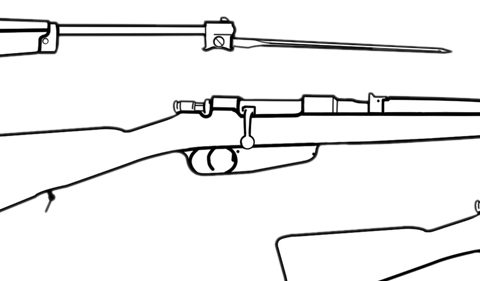
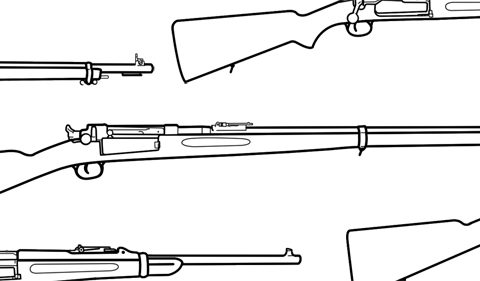
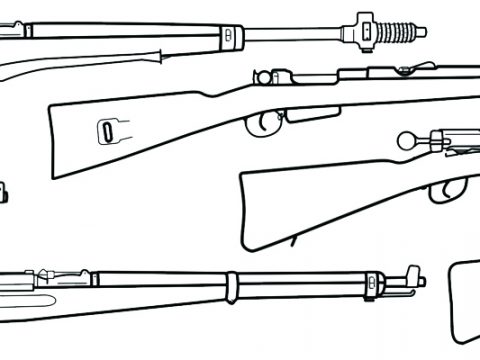
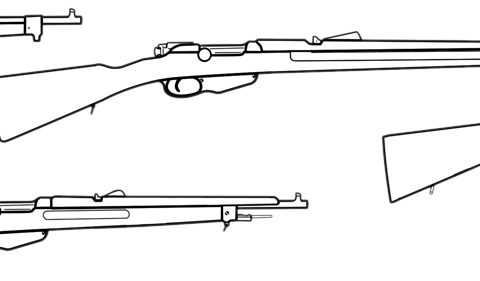
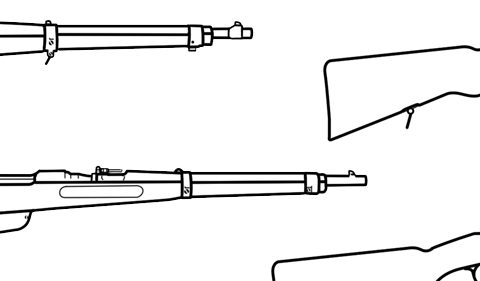
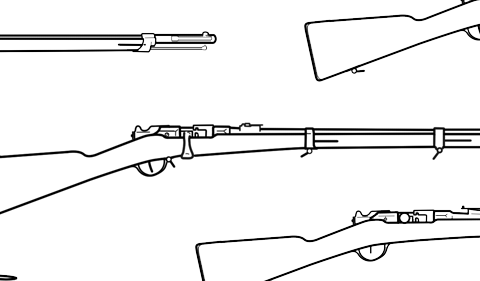
Hello , great information and illustrations you can recommend books about the Turkish mauser
Unfortunately I don’t know of a book with a strong focus on the Ottoman/Turkish rifles. Some of the earlier designs are well described in Mauser Bolt Rifles by Olson.
Hello.
How heavy are Turkish Enfield Mauser tags on the collectors’ market to get?
With Greetings from Germany
Alfred Kruk
(www.cpouch.de)
I am not sure what you mean by tags.
Great site! I lucked onto a Turkish Forestry Police carbine this summer. I actually had a 3 round clip with ammo before I found the gun. Not at all common where I come from!
Othais, you’re the man. I picked up a K.Kale short rifle (1938/46?) this weekend at a gunshow simply because it’s a Mauser that I had never seen before, and know I know all about it!
Thanks so much for your contributions to milsurp collecting ..Knowledge is power
I found a Turkish Gew88 for sale that has a chopped down hand guard, any idea of this is a real Turkish modification or a private one?
Here is the link
https://www.gunbroker.com/item/640387411
Does anyone know what load the Turkish used in the 88/05/35. I just purchased a mint copy.
By and large the action of the 88 is strong, and the 35 rebuild used standard bore (.323) so in theory any 8x57IS will work.
The turk surplus is “STOUT” while US ammo is a bit under loaded.
S&B / Privi should be a nice middle ground.
If you mean to load your own, a very safe load is the 60% H4895 solution other than that I recommend just using starting loads.
Does the Turkish Gew 88 Commision bolt share parts with other Mausers? Some parts are getting scarce.
Much appreciated, and thanks for the great information you provide to the MilSurp community.
-Russ
The gewehr 88 isn’t technically a Mauser and doesn’t share any parts with any Mausers
Let’s talk about the German Mauser Carbine Model 1898A.
The sketched rifle is really the one that became useless for the introduction of the new 7.92×57 mm “S” cartridge in 1903?
The partial sketch below the carbine seems to belong to a carbine with different stock.
So the Turkish change in addition to the retreat of the bayonet attack also provides a complete change of the stock?
Thank you
I looking at a later model Mauser K. Kale” 1940 mark on the receivers stamp on it and has been converted to 8mm Mauser and idea about the 8mm conversion?